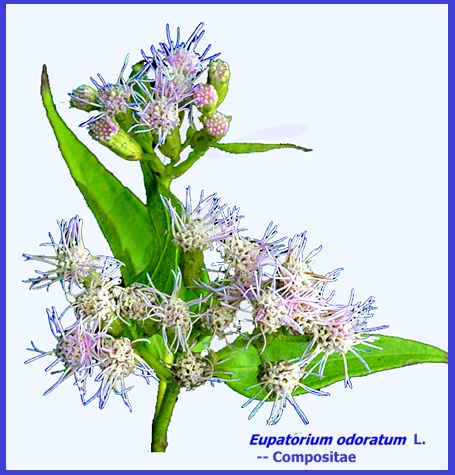FILE: <ch-43.htm> GENERAL INDEX [Navigate to MAIN MENU ]
|
EUPATORIUM SHRUBBY WEED Eupatorium odoratum L. -- Compositae (Contacts) ---- CLICK on Photo to enlarge & search for Subject Matter with Ctrl/F. GO TO ALL: Bio-Control Cases
Investigations showed that releases of Ammalo larvae results in defoliation of Eupatorium, but there is no
more oviposition by Ammalo,
nor does it move to a new area, and the fate of the pupae and adults
resulting from the released larvae is unknown. Although it is understandable that in West Africa and in India,
predators, particularly ants, are able to prevent establishment of Ammalo, the explanation of why
similar elimination has not occurred in one small area of Sabah and in a much
larger area of Sri Lanka, which may be deficient in the regulatory predators,
is unknown. REFERENCES: [Additional references may be found at: MELVYL
Library ] Bennett, F. D.
& R. E. Cruttwell. 1973.
Insects attacking Eupatorium
odoratum in the neotropics. I. Ammalo insulata (Walk.) [Lep.:
Arctiidae], a potential biotic agent for the control of Eupatorium odoratum L. [Compositae].
Tech. Bull. Commonw. Inst. Biol. Contr. 16: 105- Simmonds, F. J. 1972. Approaches to
biological control problems.
Entomophaga 17: 151-. Simmonds, F. J. 1976.
Some recent puzzles in biological control. Entomophaga 21: 327-32. |
